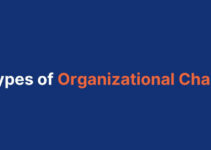The key to growth and business development is change and transformation, but the employees wouldn’t like change because it disturbs their routines. Different change models and theories would help you to guide your team members and employees during the transition phase. Today, we’ll discuss what is Lewin’s change model theory; its various stages; how to implement it; advantages and disadvantages.
Kurt Lewin was the founder of “Lewin’s change model theory” and he was also a change leader. He offers a method on how to balance various forces during the transitional phase of the organization like business process improvement, software implementation, and digital transformation.
What is Lewin’s Change Model Theory?
Lewin’s change model theory also goes by the name of “Force Field Theory.” It focuses on controlling the forces that impact the behavior of groups and individual employees, and they would impact the change initiative program of the company. However, those controlling forces boost the morale of employees and guide them in a particular direction away from the target. Employee resistance to change is the main controlling force, and it is the key impediment to the change program.
Lewin says that it is difficult to maintain a balance between these forces through employee involvement and change communication. But you can fill the skill and expertise gap by offering training and development programs to your employees. The change management should execute the stress and anxiety management methods in order to meet compliance, and they should offer reasons for the change initiative.
Lewin’s Change Model Theory – 3 Stages
The top three stages of Lewin’s change model theory or Force Field Theory are as follows;
Unfreezing – Planning Desired Changes
The unfreezing stage of Lewin’s model focuses on the perception of the management and developing the mindset of the impacted employees about the upcoming potential organizational changes. The focus of change leaders should be on finding ways to amplify the company’s readiness for change; developing a sense of urgency about the change just like Kotter’s model.
An effective change communication plan plays a significant role during the unfreezing stage; it allows the change leader to convince them and earn their support for the change initiative. Some of the key activities involved in the unfreezing stage would help the change leaders to make employees accept the change program. They’re as follows;
- Deal with employee’s concerns and issues with complete honesty, openness, and transparency
- Communicating forcefully and compellingly about the change initiative that you’re planning to launch
- Developing the change methodology and strategic vision of the change program
- Making organizations embrace the change initiative
- Launching a need analysis program by surveying and interviewing employees in the organization to comprehend the existing loopholes in the processes of the company
Change – Executing Desire Changes
This stage deals with disrupting the culture and status quo of the organization, and it focuses on executing the change program. Here you should follow the continuous and repetitive approach by collecting employees’ feedback and streamlining the transition phase. Some of the actionable steps and activities that you should keep in mind are as follows;
- Developing easy win as a visible result that would boost the morale of employees and team members
- Empowering team members and employees to manage the change initiative proactively
- Planning and conducting change management sessions and workshop
- Making sure that the information keeps on flowing continuously and offering support to the relevant employees and team members
Refreezing – Solidifying Desired changes
Refreezing is the final stage where the employees move away from the transition and change phase towards acceptance and stabilization. If the employees aren’t strengthening and solidifying the change initiative and implementing it in the organizational culture; the employees would return to the previous behavior. Some of the key steps you should take and activities to perform that would help you to support your change program are as follows;
- Finding and partnering up with the digital adoption platforms that would guide you to walk through it step-by-step
- Providing support and training to the employees on demand
- Regularly gathering feedback from employees
- Recognizing and offering incentives to the change champions and early adopters
Implementing Lewin’s Change Model – Strategies
Some of the top three strategies and methods of implementing Lewin’s change model theory are as follows;
Transforming Organizational Culture
Mckinsey said that organizations with strong cultures would have a shareholder return 3 times more than those that do not. In order to achieve the benefits of the change program in the long term, you should implement the changes in the organizational culture.
Example – Hubspot
Hubspot focuses on organizational culture and the company values it. In fact, the company has created a culture code of conduct comprising 128 pages, and it makes sure that the company’s culture remains strong. Hubspot invests a lot of resources in the skill growth and development of employees.
System, Process, Structure Change
If we study successful change programs and initiatives, they follow the balanced approach of changing a company’s system, structure, and processes.
Example – McDonald’s
McDonald’s is the world’s leading fast-food chain brand. The company has a loss of multi-billion dollars because the brand couldn’t maintain the balance between its processes and structures.
Changing Skills & Behavior
Every organizational change program requires behavioral modification of employees and the upgradation of their skills and expertise. Updating the current skills of employees would impose more responsibilities on them. Therefore, it is significant that companies should keep on conducting training and development programs.
Advantages of Lewin’s Change Model
Some of the key advantages of Lewin’s change model theory are as follows;
- Many businesses and organizations have employed this model successfully for many years
- You can easily observe various steps in the real life; the preparation phase, changing phase, and after-change phase
- Compared to other models and approaches, it is easy and requires limited preparation
- Its steps are logical and rational that you can easily comprehend its core idea and execute it
Disadvantages of Lewin’s Change Model
Some of the key disadvantages of Lewin’s change model theory are as follows;
- Focuses on organizational change and transformation rather than individuals and employees in the organization; it fails to analyze the people think different
- Doesn’t compromise on adjustments and change once you launch the change initiative
- Experts criticize it for being too simple and it lacks detail for complicated systems and structures and how to implement the changes successfully
Conclusion: What is Lewin’s Change Model Theory? Pros & Cons
After an in-depth study of what is Lewin’s change model theory; various stages, strategies for implementing it, examples, advantages, and disadvantages; we have realized that Lewin’s is successful for small changes. If you’re planning to launch it for your organization, then you should keep in mind the abovementioned factors and guidelines.
Ahsan is an accomplished researcher and has a deep insight in worldly life affairs. He goes Live 3 days a week on various social media platforms. Other than research writing, he’s a very interesting person.


